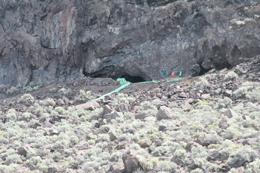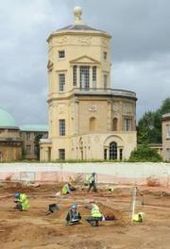
© Tom StaffordAn Oregon cave has yielded the oldest artifact ever found in the Americas.
Archaeologists claim to have found the oldest known artefact in the Americas, a scraper-like tool in an Oregon cave that dates back 14,230 years.
The tool shows that people were living in North America well before the widespread Clovis culture of 12,900 to 12,400 years ago, says archaeologist Dennis Jenkins of the University of Oregon in Eugene.
Studies of sediment and radiocarbon dating showed the bone's age. Jenkins presented the finding late last month in a lecture at the University of Oregon.
His team found the tool in a rock shelter overlooking a lake in south-central Oregon, one of a series of caves near the town of Paisley.
Kevin Smith, the team member who uncovered the artefact, remembers the discovery. "We had bumped into a lot of extinct horse, bison and camel bone - then I heard and felt the familiar ring and feel when trowel hits bone," says Smith, now a master's student at California State University, Los Angeles. "I switched to a brush. Soon this huge bone emerged, then I saw the serrated edge. I stepped back and said: 'Hey everybody - we got something here.'"
